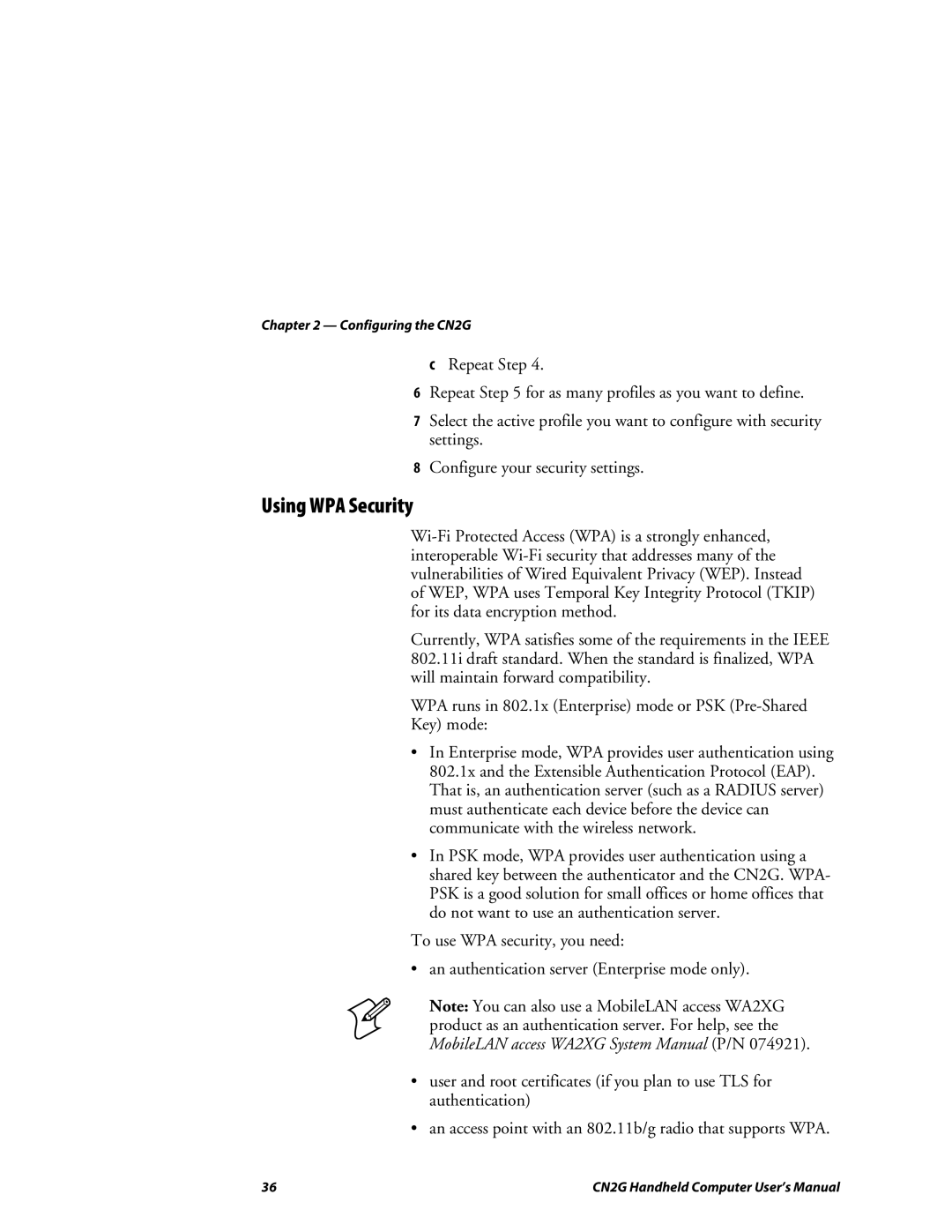Chapter 2 — Configuring the CN2G
cRepeat Step 4.
6Repeat Step 5 for as many profiles as you want to define.
7Select the active profile you want to configure with security settings.
8Configure your security settings.
Using WPA Security
Currently, WPA satisfies some of the requirements in the IEEE 802.11i draft standard. When the standard is finalized, WPA will maintain forward compatibility.
WPA runs in 802.1x (Enterprise) mode or PSK
Key) mode:
•In Enterprise mode, WPA provides user authentication using 802.1x and the Extensible Authentication Protocol (EAP). That is, an authentication server (such as a RADIUS server) must authenticate each device before the device can communicate with the wireless network.
•In PSK mode, WPA provides user authentication using a shared key between the authenticator and the CN2G. WPA- PSK is a good solution for small offices or home offices that do not want to use an authentication server.
To use WPA security, you need:
• an authentication server (Enterprise mode only).
Note: You can also use a MobileLAN access WA2XG product as an authentication server. For help, see the MobileLAN access WA2XG System Manual (P/N 074921).
•user and root certificates (if you plan to use TLS for authentication)
•an access point with an 802.11b/g radio that supports WPA.
36 | CN2G Handheld Computer User’s Manual |
